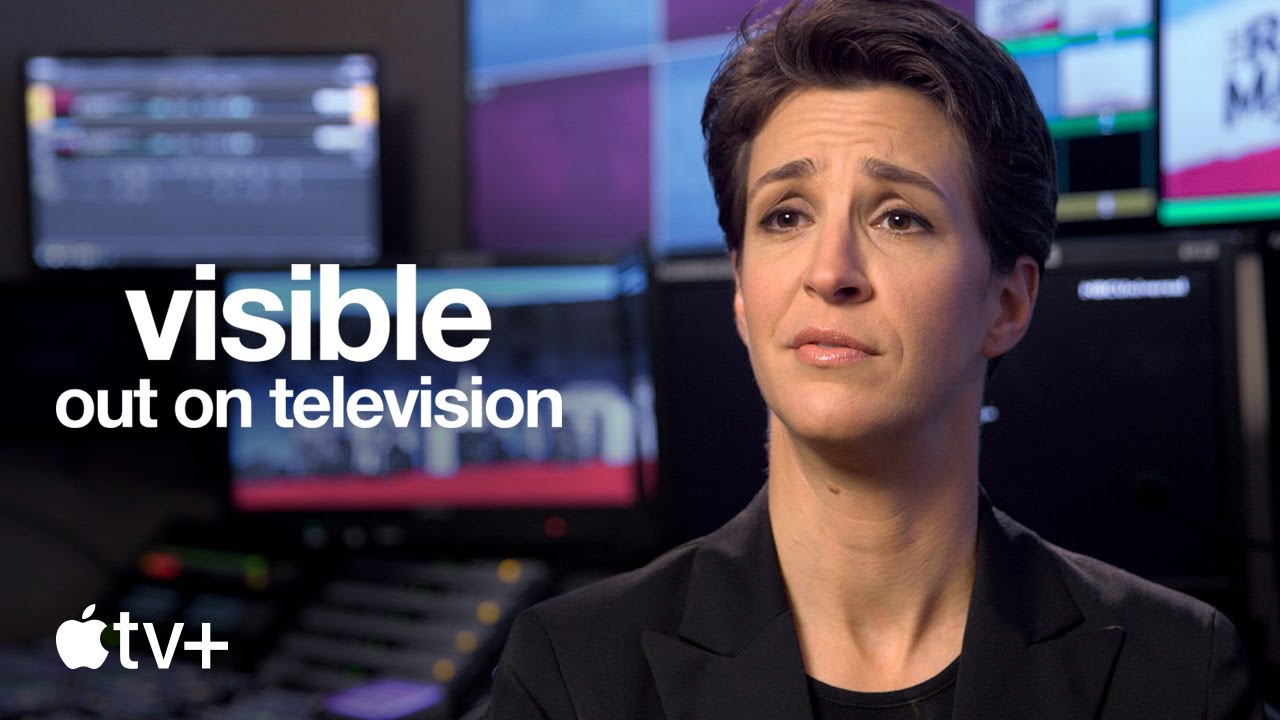Visible: Out on Television Delivers a Comprehensive Queer History Lesson
The Apple TV+ docuseries is a powerful look at the importance of representation.

Representation matters: it’s an axiom we’ve heard time and time again, because it is undeniably true. That is what the Apple TV+ docuseries Visible: Out on Television sets out to prove. The series, produced by out pioneers Wilson Cruz and Wanda Sykes, and directed by Ryan White (The Keepers) is a comprehensive and compassionate look at the history of queer people on television.
It’s a daunting challenge, to follow the rise of LGBTQ+ representation in the medium, but the filmmakers ably break it down into five parts: The Dark Ages, Television as a Tool, The Epidemic, Breakthroughs, and The New Guard. They begin with the very first time the word “homosexual” was said on television, which occurred during the Army-McCarthy hearings in 1954. Though the hearings were chiefly about ferreting out “hidden” communists within the American government, it detoured into the “threat” of subversive homosexuals working there as well.
Following that pivotal moment, the series takes viewers through the evolution of queer representation, from gay-coded villains to queer activism to the news coverage (or lack thereof) of the AIDS pandemic. Dozens of talking heads appear to relate their experiences, including Ellen DeGeneres, Andy Cohen, Billy Porter, Neil Patrick Harris, Wilson Cruz, Wanda Sykes, Sean Hayes, George Takei, Lena Waithe, and many more.
The series smartly covers all the genres of television: news, soap operas, reality TV, dramas, daytime talk shows, and how each format contributed to building America’s familiarity with queer folks, both characters and real people. Watching the series as a whole, it’s clear how integral each chapter is, how each moment of visibility and representation inspires the next generation to push further into mainstream acceptance.
Visible does a tremendous job of making the political personal, and showing both the macro and micro affects of what we watch. It’s one thing to watch clips of the McCarthy hearings, but it’s quite another to hear Tim Gunn discuss how those hearings enraged his macho FBI agent father, and how that father took his anger out on Tim.
The filmmakers create genuinely moving and intimate moments from the headlines, especially with The Real World: San Francisco‘s Pedro Zamora. As the first openly gay men with AIDS to be portrayed in popular media, the young AIDS educator humanized the virus and provoked real change in the way the country dealt with the virus. It’s heartbreaking to hear his castmates discuss his spirit and his legacy.
The series doesn’t pull punches, and deftly explores the problematic portrayals of queer characters, as well as the lack of intersectionality available for queer and trans people of color. We now live in a world with some excellent LGBTQ+ representation on television, but it’s important to note who still hasn’t seen themselves onscreen, and how long it took us to get here.
In making the series, the filmmakers have given us not only an exhaustive look at queer representation, but the history of LGBTQ+ acceptance and tolerance. It’s a strong, beautiful statement about the transformative power of seeing yourself reflected in popular culture. The movement has come so far, but it still has further to go.
(image: Apple TV+)
Want more stories like this? Become a subscriber and support the site!
—The Mary Sue has a strict comment policy that forbids, but is not limited to, personal insults toward anyone, hate speech, and trolling.—
Have a tip we should know? [email protected]
